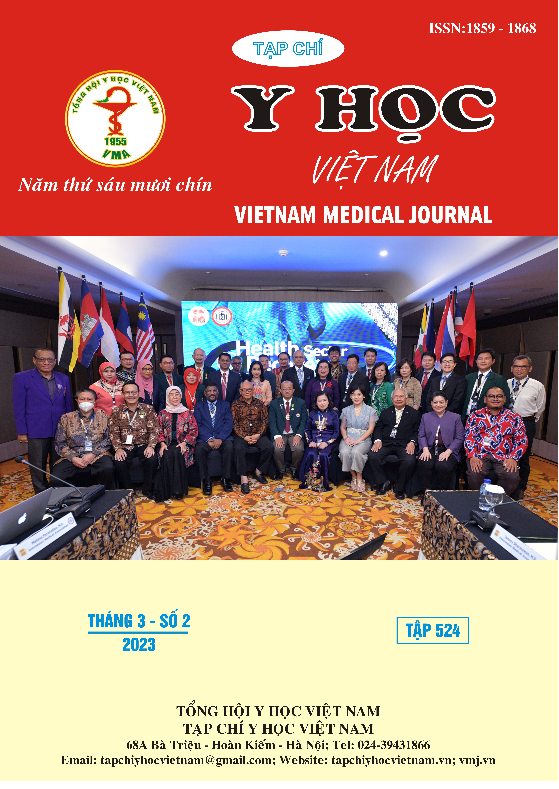CLINICAL FEATURES, IMAGING FINDINGS AND RESULTS OF EMBOLIZATION IN TREATMENT OF BLUNT SPLENIC INJURY
Main Article Content
Abstract
Purpose: To describe clinical features, imaging findings and evaluate the results of embolization in treatment of blunt splenic injury. Object and Method: Descriptive study in 49 patients with blunt splenic injury addmitted to Viet Duc Hospital were conservative management by embolization from January 2017 to Febuary 2019. Results: Most of patients with blunt splenic injury have left upper quadrant pain (67,3%) and hemodynamically stable (83,7%) on admission. On plain abdominal x ray, two most common findings are peritoneum effusion and enlarging spleen (76.9% and 53.8%). On sonography, hemoperitoneum and intraparenchymal laceration are the most common findings (87.8% and 63.3%). According to grading of the American Association of Trauma Surgeons (AAST), including: 1(2.1%) grade I, 7(14.7%) grade II, 20(41.6%) grade III, 20 (41.6%) grade IV. Primary clinical success rate was 95.9%. Among 22 patients who required blood transfusion, the average amount of blood transfusion was 1.28 ± 2.02 units. The mean hospital stay was 10.8±6.7 days. Fever and pain in splenic area are common minor complications (28.6 and 20.4), no patient has major complications required treatment. Conclusion: MSCT is the best diagnostic imaging method in diagnosis blunt splenic injury. Splenic artery embolization is a safe treatment with a high success rate in conservative management of blunt splenic injury.
Article Details
Keywords
Blunt splenic injury, clinical features, imaging findings, embolization
References
2. de Schepper, A.M., Medical imaging of the spleen. 2000: Springer Science & Business Media.
3. Teuben, M.P.J., et al., Safety of selective nonoperative management for blunt splenic trauma: the impact of concomitant injuries. Patient Safety in Surgery, 2018. 12(1): p. 32.
4. Jabbour, G., et al., Clinical and radiological presentations and management of blunt splenic trauma: a single tertiary hospital experience. 2017. 23: p. 3383.
5. Yang, K., et al., Clinical features and outcomes of blunt splenic injury in children: A retrospective study in a single institution in China. 2017. 96(51).
6. Siniluoto, T., et al., Ultrasonography in traumatic splenic rupture. 1992. 46(6): p. 391-396.
7. Monaco, D., et al., The role of arterial embolization in blunt splenic injury. 2011. 116(3): p. 454-465.
8. Marmery, H., et al., Optimization of Selection for Nonoperative Management of Blunt Splenic Injury: Comparison of MDCT Grading Systems. American Journal of Roentgenology, 2007. 189(6): p. 1421-1427.


